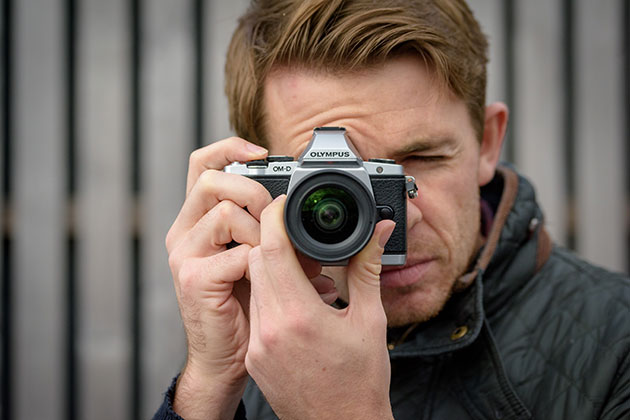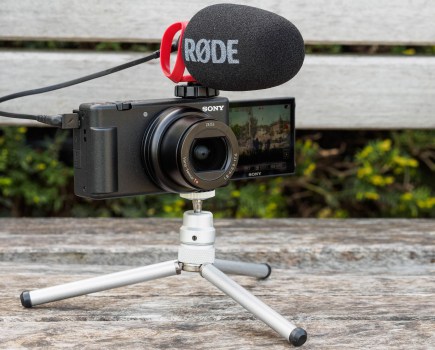If you want your budget to go as far as possible, you should consider buying one of the best second-hand cameras. Audley Jarvis and the AP team reveal the top bargains.
The best second-hand cameras can offer incredible bang for your buck. We know not everyone has the budget for the latest and greatest professional models, but many photographers don’t want to have to make do with entry-level cameras either. Second-hand cameras offer the best of both worlds.
You have to be realistic when shopping second-hand and understand you won’t get cutting-edge features and the highest-resolution sensors. That’s why it pays to shop smart, invest in features you care about, and compromise on ones you don’t. We’ve put together this guide to make the process a little easier. Here, you’ll find a comprehensive list of what we reckon are the best second-hand cameras for a range of budgets. We’ve got a mix of beginner-friendly models and some originally pitched at professional photographers. One thing they’ve all got in common – they can be picked up for a fantastic price!
New to shopping for second-hand cameras? Don’t fret – we’ll take a look through the key things to watch out for. You can also scroll to the bottom of this article for tips on how to be smart when shopping second-hand – what to look for, what to avoid, and how to know when you’re being sold a dud. You’ll likely need to buy your lens separately, so check out our guide to the best second-hand lenses too. Need something ultra-cheap? Take a look at the AP team’s personal recommendations of our favourite cameras for less than £100.
Our quick list to the best second-hand cameras
Best second-hand entry-level cameras under £200 / $200
- Nikon D5100
- Canon EOS 600D
- Sony Alpha 5000
Second-hand mirrorless bargains under £350 / $350
- Olympus OM-D E-M5
- Sony Alpha 6000
- Fujifilm X-T10
Best second-hand cameras for enthusiasts under £400 / $400
- Fujifilm X-Pro1
- Pentax K-3
Best full-frame second-hand cameras under £400 / $400
- Canon EOS 6D
- Nikon D600
- Sony Alpha 7
Best entry-level second-hand cameras under £200 / $200
Nikon D5100 (with 18-55mm VR lens)
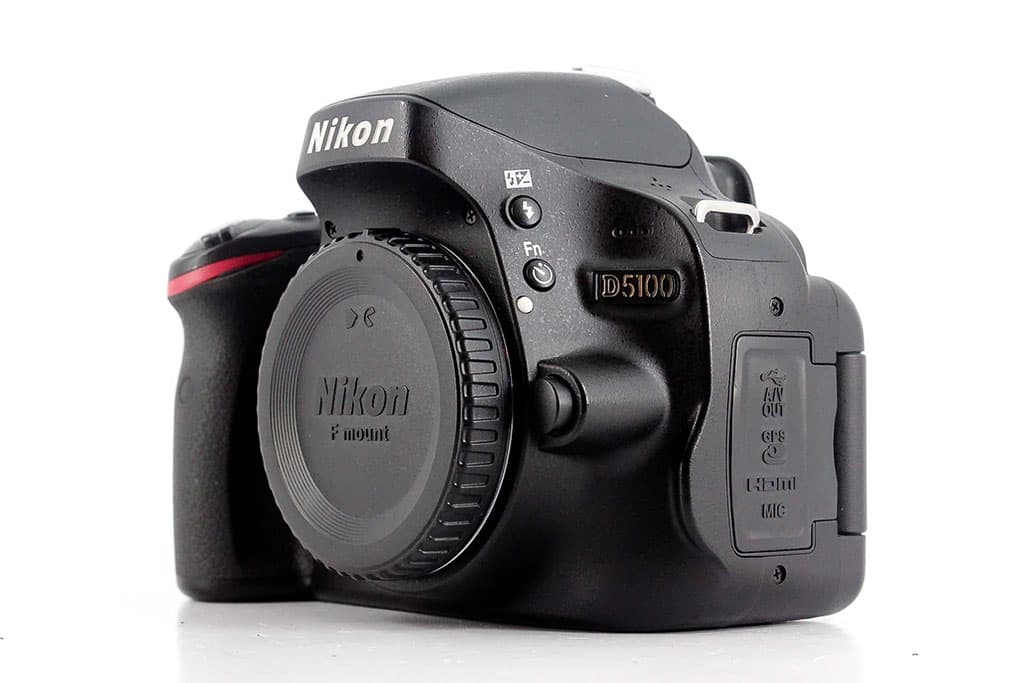
At a glance:
- Price £154 / $169 body only
- Sensor 16.2MP APS-C CMOS sensor
- Sensitivity ISO 100-6400 (ISO 25,600 extended)
- Continuous shooting 4fps
- Video 1080p Full HD video at 30fps
- Rear display 3in, 921k-dot vari-angle LCD
- Viewfinder Pentamirror, 95% coverage at 0.78x
Upon its release in 2011, the Nikon D5100 was positioned as an upper entry-level DSLR for those looking for something a little more advanced than the more basic D3100. While the D5100 undoubtedly shows its age now in terms of its core hardware, it remains a practical and easy-to-use camera that’s capable of great image quality. Better still, while the D5100 and 18-55mm kit lens package would have cost around £750 at the time of its launch, second-hand camera bodies in ‘good’ condition can now be picked up for as little as £109 from the likes of MPB.com and other reputable second-hand retailers. Add an 18-55mm kit zoom, and you’ll still get plenty of change from £200, making it highly affordable and great value.
The D5100 is built around a 16.2MP APS-C CMOS sensor and Nikon’s EXPEED 2 image processor – the same components found inside the much more advanced and expensive D7000 released in 2011 that went on to win numerous ‘camera of the year’ awards. The point we’re trying to make here is that while the D5100’s 16MP resolution might seem a little lacking compared to the 24MP APS-C sensors that are common to many contemporary DSLRs (including the D5100’s direct descendant – the D5600), the overall image quality is still very good.
Autofocus and metering
Elsewhere, the D5100 is equipped with an 11-point phase-detection AF module, arranged in a diamond formation across the viewfinder with one cross-type sensor in the middle. Again, while this might seem a little dated next to the 39-point system offered by the D5600, the D5100’s autofocus system is still effective and fast enough in most situations. One other thing to bear in mind is that the D5100 doesn’t have a built-in AF motor, which means only AF-S and AF-I lenses will focus automatically when mounted to it – other lens types will need to be manually focused. In addition, the D5100 isn’t compatible with Nikon’s recent AF-P lens range.
Metering is handled via a 420-pixel metering system, which we found to produce consistently accurate results. Overall image quality is very good, with the D5100 providing a range of JPEG sizes and quality settings, alongside a range of individual Picture Control settings that determine how your images are processed in-camera. More-advanced users can, of course, record images as lossless 14-bit raw files and process them to their own specifications in Lightroom or similar.
Screen and viewfinder
In terms of shooting modes, the D5100 comes equipped with the full PASM quartet, giving users the choice of Program, Aperture-priority, Shutter-priority and Manual modes. Point-and-shoot duties are catered for via a fully Automatic mode, backed up by a selection of individual Scene modes. Last but not least, the D5100 also offers a range of digital filters that can be applied to give your images a unique look – you’ll find these under the Effects option on the mode dial.
The back of the camera is equipped with a vari-angle 3in/921k-dot LCD display that is hinged at the side. This enables it to be pulled away by 180° and rotated through 270°, allowing users to shoot from awkward angles or to capture self-portraits with. Above this is a pentamirror-style optical viewfinder that provides 95% scene coverage at a magnification of 0.78x.
In terms of size, the D5100 is impressively small for a DSLR, and at 560g with the battery installed, it isn’t particularly heavy either. Build quality is very much what you might expect of an entry-level DSLR. Like most entry-level and mid-range Nikon DSLRs, the D5100’s outer polycarbonate shell has been given a mottled finish so as to give it a more premium metallic look. While the outer shell provides ample protection against the occasional gentle knock, it obviously isn’t as robust as the magnesium alloy cages found on more expensive Nikon DSLRs. The D5100 isn’t weather-proofed either, so you’ll need to take care when using it near water or in wet weather. For beginners starting out and those who’d like the option of full manual control, the D5100 offers a lot for your money.
Canon EOS 600D (with 18-55mm IS II lens)

At a glance:
- Price £159
- Sensor 18MP APS-C CMOS
- Sensitivity ISO 100-6400 (ISO 12,800 extended)
- Continuous shooting 3.7fps
- Video 1080p Full HD at 30fps
- Rear display 3in, 1.04-million-dot vari-angle LCD
- Viewfinder Pentamirror, 95% coverage at 0.85x
Released at the beginning of 2011, second-hand examples of the Canon EOS 600D now provide excellent value for money – especially for anyone on a tight budget looking to wring the most out of their budget. Benefiting from a vari-angle rear LCD display, the 600D makes light work of taking selfies or shooting from awkward angles, while the 9-point AF system is both fast and accurate. Video capabilities extend to a respectable 1080p Full HD at 30fps, while the built-in pop-up flash doubles up as a wireless commander unit should you want to get creative with off-camera flash. Image quality from the 18MP APS-C CMOS sensor is excellent.
Sony Alpha 5000 (with 16-50mm lens)
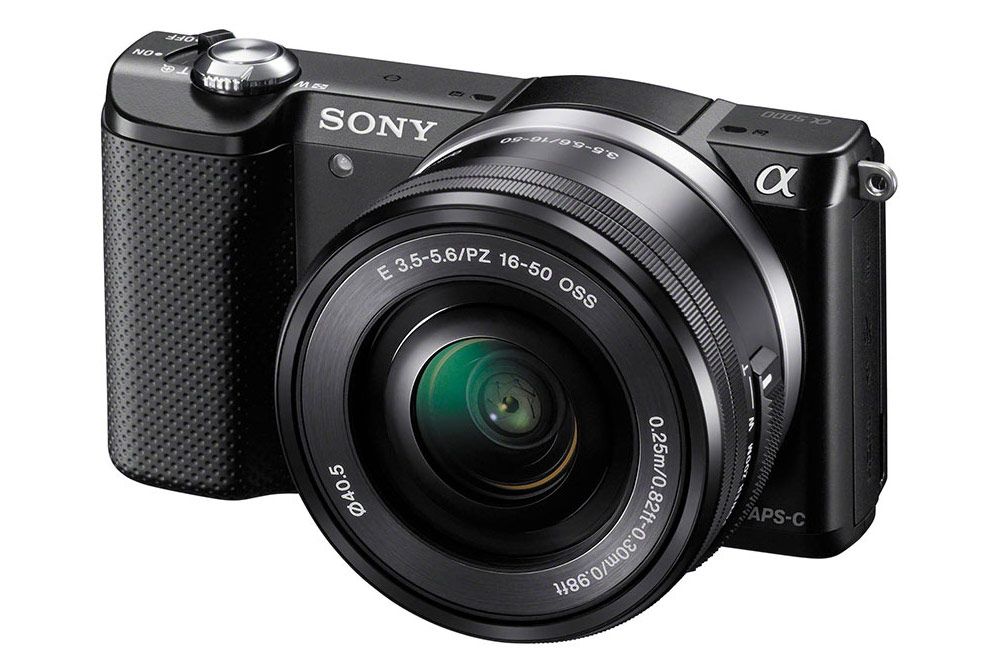
At a glance:
- Price £119 / $265 body only
- Sensor 20.1MP APS-C CMOS
- Sensitivity ISO 100-16,000
- Continuous shooting 3.5fps
- Video 1080p Full HD at 24fps
- Rear display 3in, 460k-dot LCD
- Viewfinder None
The A5000’s big claim to fame upon its release in 2014 was that it was the smallest interchangeable-lens camera on the market. While that may no longer be the case, it remains impressively diminutive. As an entry-level model, controls are stripped back to the bare minimum, which makes it very easy to use, especially in fully automatic mode. That said, more advanced users may find the constant need to enter the in-camera menu a chore. While the 460k-dot rear LCD display is a little underwhelming by modern mirrorless standards, the A5000 nonetheless feels solid in the hand and is capable of delivering good results in a wide variety of situations.
Second-hand mirrorless bargains under £350 / $350
Olympus OM-D E-M5 (with 12-50mm kit zoom lens)

At a glance:
- Price £199 / $219 body only
- Sensor 16.1MP Four Thirds Live MOS
- Sensitivity ISO 200-25,600
- Continuous shooting 9fps
- Video 1080p Full HD at 30fps
- Rear display 3in, 610k-dot tiltable OLED touchscreen
- Viewfinder 1.44-million-dot EVF
Released in 2012, the E-M5 was the first camera to grace Olympus’ all-new OM-D range. Whereas existing PEN models at the time borrowed heavily from 1960’s Olympus PEN half-frame rangefinder cameras, the OM-D E-M5 took its inspiration from the company’s ‘OM’ range of 35mm SLRs from the same era. Back in 2012, a brand-new OM-D E-M5 and M.Zuiko ED 12-50mm f/3.5-5.6 EZ kit zoom would have set you back in the region of £1,150. These days, however, MPB.com has second-hand examples in ‘like new’ condition for just £219. Add an M.Zuiko 12-50mm kit zoom lens for £124, and the whole package could be yours for less than £350.
For the money, you get a great camera. The E-M5 is built around a 16.1MP Live MOS sensor – a modified version of which is still in use today – and the Olympus TruePic VI image processor. Native sensitivity ranges from ISO 200-25,600 while shutter speeds range from 1min to 1/4000sec. The maximum continuous shooting speed is a healthy 9fps. Being an older model, there is no support for 4K capture, but video capabilities do extend to 1080p Full HD capture at 30fps. The back of the camera is equipped with a 3in, 610k-dot tiltable LCD display with limited touchscreen functionality, above which sits a 1.44m-dot EVF. Admittedly, both the display and EVF are a bit dated compared to the 1.04-million-dot displays and 2.36-million-dot EVFs found on more recent Olympus cameras, but they both remain perfectly usable.
5-axis image stabilisation
One of the biggest innovations the E-M5 brought to the table on its launch was built-in 5-axis image stabilisation. In our review, we found it to work exceptionally well shooting handheld at slower shutter speeds. Another benefit of having the image stabilisation technology built-in to the camera is that there’s no need to pay a premium for optically stabilised lenses. In addition to Olympus MFT lenses, the E-M5 is also fully compatible with Panasonic and other third-party MFT lenses – you won’t be lacking for glass options.
Autofocus is taken care of by a 35-point contrast-detect system that at the time of the E-M5’s launch was billed by Olympus as the ‘world’s fastest’ contrast-detect system. Things have moved on a bit since then, but for the vast majority of situations, the E-M5’s overall AF performance remains impressive and is highly unlikely to disappoint.
Build quality is another area where the OM-D E-M5 shines, with its magnesium alloy body giving it an undoubtedly premium feel in the hand. Better still, the camera is also fully weather-sealed, meaning it can be used in the kind of conditions that would require many other cameras to be tucked safely away in a dry camera bag. In addition to being solidly built, the E-M5 is impressively small and light.
Sony Alpha 6000 (with 16-50mm lens)

At a glance:
- Price £314 / $359 body only
- Sensor 24.3MP APS-C CMOS
- Sensitivity ISO 100-25,600
- Continuous shooting 11fps
- Video 1080p Full HD at 60fps
- Rear display 3in, 921k-dot tiltable LCD
- Viewfinder 1.44-million-dot EVF
Positioned as a more advanced alternative to the A5000 and released soon after it in 2014, the A6000 benefits from a sizeable increase in resolution (from 20MP to 24.3MP), an expanded feature set and improved processing power. Unlike the A5000, it also gains a built-in electronic viewfinder that sits above a sharper rear LCD display. Unlike the purely contrast-detect AF system of the A5000, the A6000 benefits from a hybrid AF system that employs 179 phase-detection AF points alongside 25 contrast-detect AF points for speedier focus acquisition. Other highlights include a burst speed of 11fps, and 1080p video.
Fujifilm X-T10 (with 16-50mm lens)

At a glance:
- Price £219 / $400 body only
- Sensor 16.3MP APS-C X-Trans CMOS II
- Sensitivity ISO 200-6400 (ISO 100-51,200 extended)
- Continuous shooting 8fps
- Video 1080p Full HD at 60fps
- Rear display 3in, 920k-dot tiltable LCD
- Viewfinder 2.36-million-dot EVF
Released in 2015, the X-T10 was essentially a scaled-down version of the X-T1, which at that time was Fujifilm’s flagship mirrorless camera. While a number of the X-T1’s features were omitted to bring the cost down, the X-T10 does share the same sensor and image processor. Consequently, image quality is very much on a par with that of the X-T1. While it has since been succeeded by the 24.3MP X-T20, the X-T10 remains a stylish camera that provides good value for money. It also comes encased within a weather-sealed magnesium alloy body. Highlights include a hybrid AF system that uses on-sensor phase-detection pixels for fast AF, 1080p Full HD video capture plus Fujifilm’s excellent Film Simulation modes.
Best second-hand cameras for enthusiasts under £400 / $400
Fujifilm X-Pro1 (with 35mm f/1.4 lens)

At a glance:
- Price £350 / $578 body only
- Sensor 16.3MP APS-C X-Trans CMOS
- Sensitivity ISO 200-6400 (ISO 100-25,600 extended)
- Continuous shooting 6fps
- Video 1080p Full HD at 24fps
- Rear display 3in, 1.23-million-dot LCD
- Viewfinder Hybrid viewfinder
One of the first cameras out of the gate in the Fujifilm X series (though not the first), the Fujifilm X-Pro1 is a gorgeous piece of technology. Engineered to look and feel like a classic rangefinder camera, the X-Pro1 is a streamlined camera designed to do everything photographers want, without over-burdening them with things they don’t need. Also, in the years since the X-Pro1’s release, the X-mount lens system has expanded massively with some of the sharpest optics in the business.
The image quality the X-Pro1 is capable of producing is still, to this day, very impressive. The sensor doesn’t deliver quite the same resolving power and noise control as subsequent X-Trans sensors, naturally, but images have a wonderful, distinctive look to them that’s hard to get elsewhere. In our revisitation of the camera as a second-hand classic, photographer Mark Simpson described the look of the shots the X-Pro1 takes as ‘organic’, and when you look at them, you can see what he means. It just feels like such a natural image-making machine.
Streamlined ergonomics
The X-Pro1 handles like a dream. Its control scheme is based around physical dials and hunting, which means you’ll do a lot less tedious menu hunting than you would with many mirrorless cameras made around the same time (and, indeed, ones made today). Its size makes it easy to carry around for a full day’s shooting, but at the same time, the build quality feels premium.
The clever hybrid viewfinder is a must to mention. Back in the days of the X-Pro1’s release, this was a pretty big deal, combining the immediacy of an optical viewfinder with the usefulness of an electronic one. From day one, X-Pro cameras have been about persuading photographers to use the viewfinder rather than relying on the LCD screen. So much so that when it came time to make an X-Pro3, Fujifilm took the daring step of making it a flip-down model that can’t easily be viewed while shooting. That might be a step too far for some.
Focusing experience
So, with all this praise we’re heaping on the X-Pro1, you might reasonably think it’s a perfect camera to buy second-hand. This isn’t quite the case – Fujifilm took a while to sort out the autofocus on its cameras, and even when the X-Pro1 was brand new, its AF speed was lagging behind the competition. This does compromise the X-Pro1’s utility as a street camera – a discipline at which it otherwise excels.
There are also some good manual focusing options on the X-Pro1, as befitting a camera that hearkens back to the golden era of photography. When using the optical viewfinder, you get a handy rangefinder scale along the bottom that gives current focus distance as well as a bar indicating depth of field. If you’re still having trouble focusing, you can switch to the EVF for a more comprehensive readout.
For focusing on fine details, there’s an enlarging option that you can easily switch in and out of without removing your eye from the viewfinder. The whole experience of the X-Pro1 is clearly designed to keep your eye pressed to that cup and in the moment – as we’ve seen, Fujifilm would carry this ethos over to subsequent X-Pro cameras.
Superb image quality
One thing that consistently impressed us in our Fujifilm X-Pro1 review, all the way back in 2012, was the camera’s ability to resolve incredibly fine detail. If you shoot Raw images, you’ll find it’s possible to recover a hell of a lot of highlight detail from your images.
Colour reproduction on the X-Pro1 is excellent, and the famous Film Simulation modes are present and correct. You can have hours of fun trying out different modes like Provia, Velvia and Astia, and there are a number of monochrome options for those who shoot in black and white. The camera also produces fantastic JPEG images straight out of camera, and if you’re not someone who likes to spend too much time messing about in software, it’s a superb choice.
Pentax K-3 (with Pentax-DA 18-135mm f/3.5-5.6 lens)
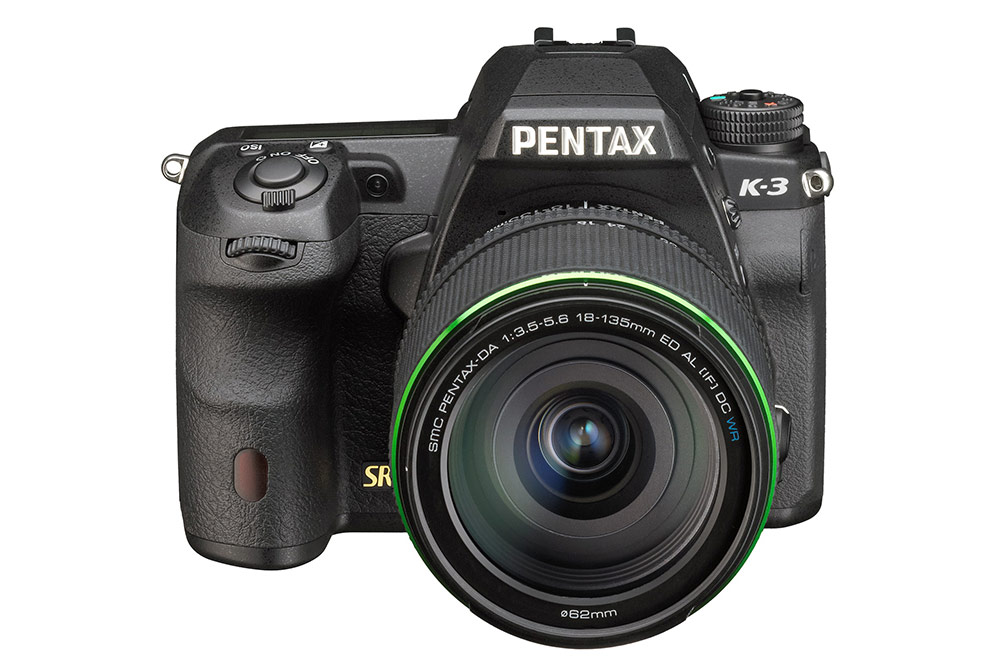
At a glance:
- Price £359 / $488
- Sensor 23.35MP APS-C sensor
- Sensitivity ISO 100-51,200
- Continuous shooting 8.3fps
- Video 1080p Full HD at 60fps
- Rear display 3.2in, 1.037-million-dot TFT LCD
- Viewfinder Pentaprism, 100% coverage at 0.95x magnification
The Pentax K-3 isn’t as flashy as many other recent DSLRs, but it’s a rugged and highly capable camera that can do a good job in just about any conditions. Its high-quality 23.25MP APS-C sensor uses no anti-aliasing filter, and can resolve a pretty impressive level of detail. You get a solid 100-51,200 ISO range for low-light work, and a continuous shooting rate of 8.3fps, which really is punching for a camera at this price point. Subsequent Mark II and Mark III versions have helped drive the second-hand price of this model down a little, and these days the Pentax-DA 18-135mm f/3.5-5.6 lens can be picked up used for £130 / $217. That’s a pretty solid imaging combo, at a great price!
Best full-frame second-hand cameras under £400 / $400
Canon EOS 6D (with EF 50mm f/1.8 II lens)
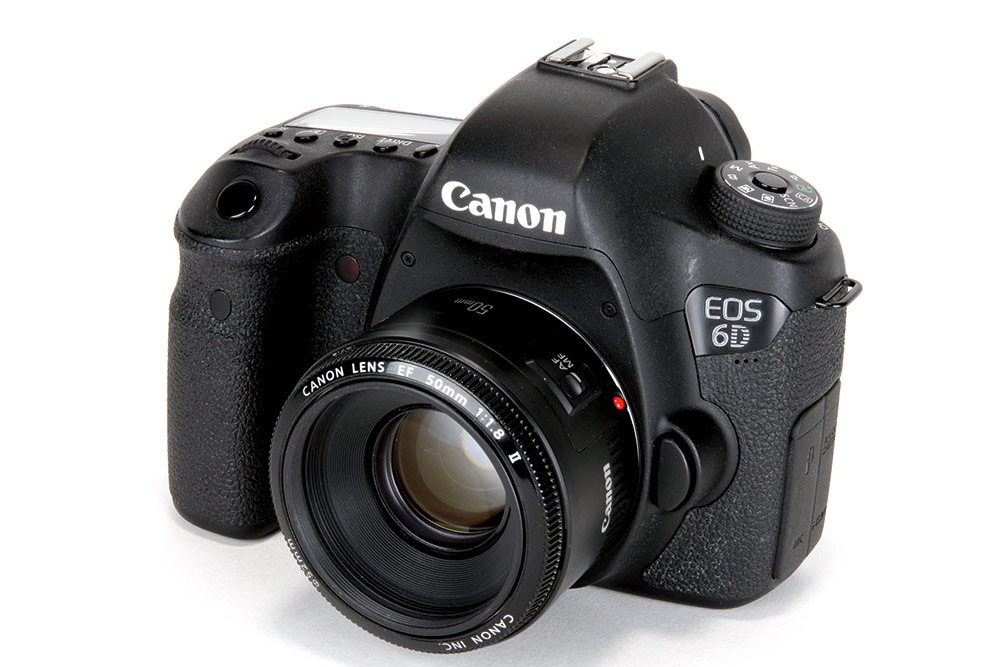
At a glance:
- Price £479 / $549
- Sensor 20.2MP full-frame CMOS
- Sensitivity ISO 100-25,600 (ISO 50-102,800 extended)
- Continuous shooting 4.5fps
- Video 1080p Full HD at 30fps
- Rear display 3in, 1.04-million-dot LCD
- Viewfinder Pentaprism, 97% coverage at 0.71x magnification
Announced at Photokina 2012 and released a couple of months later, the EOS 6D was marketed as a smaller and more affordable alternative to the hugely popular EOS 5D Mark III. It was released with a body-only price of £1,680 and it’s now possible to source a second-hand 6D in ‘excellent’ condition with a shutter count under 10k for £349 from MPB.com. Throw in a ‘like new’ second-hand EF 50mm f/1.8 II prime for a further £79, and a full-frame DSLR starter kit could be yours for under £700 – for those looking to buy brand new in today’s DSLR market that’s barely enough to secure a mid-range APS-C DSLR.
Fulfilling its brief, the 6D borrows some hardware from the 5D Mark III, but also brings some of its own to the table in order to keep costs down. For example, while the 5D Mark III was built around a 22.3MP full-frame CMOS sensor, the 6D instead employs a 20.2MP chip. Both cameras share the same DIGIC 5+ image processor though, and both provide a native sensitivity range of ISO 100-25,600 that can be expanded to the equivalent of ISO 50-102,800. Last but not least, whereas the 5D Mark III offers a top continuous shooting speed of 6fps, the 6D maxes out at 4.5fps.
Autofocus and metering
Another area where the 6D differs from the 5D Mark III is with its phase-detect autofocus module. While the 5D Mark III comes with a 61-point system, the 6D instead employs 11 AF points that are spread out in a diamond formation in the central portion of the viewfinder, including one cross-type sensor in the middle. In our original review we noted how the 6D’s AF system nonetheless does a good job, providing fast and accurate focusing. As with many Canon DSLRs that don’t come equipped with Canon’s Dual Pixel AF technology, autofocus performance when the camera is being used in live view is noticeably sluggish.
Metering is handled by Canon’s own 63-zone Dual Layer SPC metering system – the same module employed the 5D Mark III – and offers a choice of Evaluative, Partial, Spot or Centre-weighted metering. The back of the 6D is equipped with a fixed 3in/1.04- million-dot LCD display that produces a clear and sharp image. Above this sits a pentaprism-style optical viewfinder that provides 97% frame coverage at a magnification of 0.71x. As is usually the case with more-advanced DSLRs, the 6D also sports a small LCD display on the top of the camera providing a quick reference point to key camera settings.
In terms of exposure modes, the 6D is well served by the full quartet of PASM modes, along with a fully automatic Scene Intelligent Auto mode and a range of specific Scene modes for less-experienced users. In addition, the 6D also provides a High Dynamic Range mode that captures a sequence of JPEGs at different exposure values and blends them together into a single image. Video-recording abilities, meanwhile, extend to 1080p Full HD capture at up to 30fps.
Wireless connectivity
While built-in Wi-Fi connectivity is something that we largely take for granted these days, the 6D was actually the first DSLR to implement the technology – until its release, the feature was only really seen in mirrorless cameras and a few high-end compacts. DSLR users, meanwhile, had to either attach bespoke Wi-Fi modules or wait until they were able to manually transfer their images to a computer via a card reader.
In terms of build quality, the 6D benefits from front and rear magnesium alloy panels bookended by a polycarbonate top-plate. By full-frame standards it’s quite a small camera too, which makes it easier to transport around when not in use. Paired with the EF 50mm f/1.8 II lens, the combination weighs 890g.
Nikon D600 (with AF-Nikkor 50mm f/1.8D)
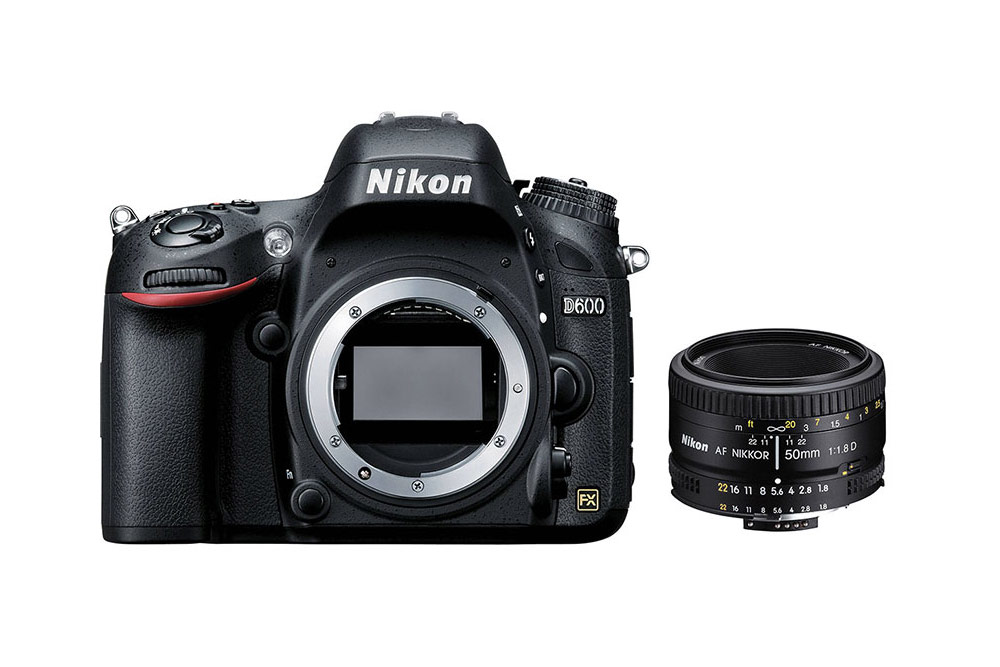
At a glance:
- Price £300 / $380 body only
- Sensor 24.3MP full-frame CMOS
- Sensitivity ISO 100-6400 (ISO 50-25,600 extended)
- Continuous shooting 5.5fps
- Video 1080p Full HD at 30fps
- Rear display 3.2in, 921k-dot LCD
- Viewfinder Pentaprism, 100% coverage at 0.7x magnification
Announced towards the end of 2012, the D600 was at the time the cheapest full-frame DSLR in Nikon’s range, slotting in just below the semi-professional D800. The 24.3MP full-frame sensor is capable of excellent image quality, while the 39-point phase-detection AF system provides fast and accurate focus acquisition. For those looking to get creative with off-camera flash, the D600’s built-in flash can also be used as a command unit via Nikon’s Creative Lighting System. In terms of size and build quality, the D600 remains one of the smaller full-frame DSLRs available and also benefits from magnesium alloy top and back panels alongside dust- and water-sealing. It’s a cheap route into full-frame photography.
Sony Alpha 7 (with FE 50mm f/1.8)

At a glance:
- Price £350 / $420 body only
- Sensor 24.3MP full-frame CMOS
- Sensitivity ISO 100-25,600
- Continuous shooting 5fps
- Video 1080p Full HD at 30fps
- Rear display 3in, 921k-dot tilting LCD
- Viewfinder 2.4-million-dot EVF
While the original Sony Alpha 7 that was released in 2014 isn’t able to match its direct descendants in terms of raw speed or processing power, it nonetheless remains a great little camera in its own right. Built around a 24.3MP full-frame sensor and Sony’s Bionz X processor, the A7 was one of the first mirrorless cameras to benefit from hybrid AF technology, which in this case combines 117 on-sensor phase-detection pixels with a further 25 contrast-detect points for frame-wide coverage and impressively fast lock-on speeds. Better still, while a brand new A7 would’ve set you back £1,500 (body-only) in 2014, second-hand examples in ‘excellent’ condition and with relatively low shutter counts can now be picked up for under £400.
Buying a second-hand camera
How to choose the best second-hand cameras
This is true for buying any camera, but goes double for second-hand – focus on the features you need. This means thinking about what you plan to shoot before buying a camera, so you can choose one that’s well suited to that task. If you want to make big prints of your images, prioritise megapixels. If you want to capture fast-moving subjects like wildlife, burst rate is key. For low-light work you want a good ISO range, and you may also want to think about the physical size of the camera if you’re planning on carrying it around all day.
Warranties/guarantees
If you decide to buy second-hand, we’d strongly advise sticking with an established and reputable firm. This includes – but isn’t limited to – the likes of WEX Photographic, MPB, CameraWorld, Park Cameras, Richard Caplan, Camera Jungle, Ffordes, Grays of Westminster, and the London Camera Exchange. Reputable specialists like these will generally offer a short guarantee on all second-hand kit, usually three to six months. This is in addition to any consumer protection rights you are legally entitled to. While buying privately can usually save you additional money over a second-hand specialist, you are unlikely to get any such guarantees.
Second-hand camera ratings system
All the major second-hand camera specialists employ a fixed grading scale that’s used to indicate the overall condition of the camera. The most commonly used terms for this purpose are: ‘Mint’ or ‘Like New’, ‘Excellent’, ‘Good’, and ‘Fair’ or ‘Well Used’. Some companies – WEX, for example – use a numerical grading system instead. Either way, ‘Mint’ or ‘Like New’ condition describes a camera that is scratch-free and in perfect working order. ‘Excellent’ describes a camera in perfect working order, but with minor cosmetic marks. ‘Good’ describes a camera that has been well looked after, but which shows obvious signs of use. Last, ‘Fair’ or ‘Well Used’ is used to describe a camera that is in good working order but which bears obvious signs of use and age. In almost all cases, the retailer will have checked the sensor for dust and cleaned it if necessary. Most companies also offer detailed images of the products they have for sale so you can inspect it yourself at close magnification.
Shutter count
Another useful indicator that can help you to gauge the condition of a second-hand camera you might be interested in is its shutter count. This describes how many times the shutter has been opened and closed and is useful to know because the delicate blades that make up a camera’s shutter mechanism have a limited lifespan, after which expensive repairs may well be required. Knowing a camera’s shutter count therefore not only provides a good idea of how heavily it has been used by the previous owner but also gives an indication of how much life is left in it
Text by Audley Jarvis, with contributions from Jon Stapley.
For more recommendations, have a look at our guide to the best second-hand full-frame cameras available, or have a look at our guide to finding a great second-hand lens.
Related reading:
- Best used DSLRs
- Small wonders: best used compact cameras for winter
- Black Friday is coming, but why not consider buying used?
Follow AP on Facebook, X, Instagram, YouTube and TikTok.

